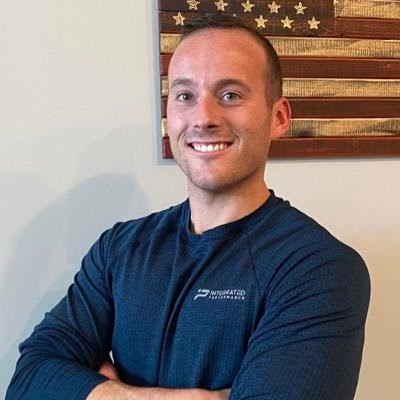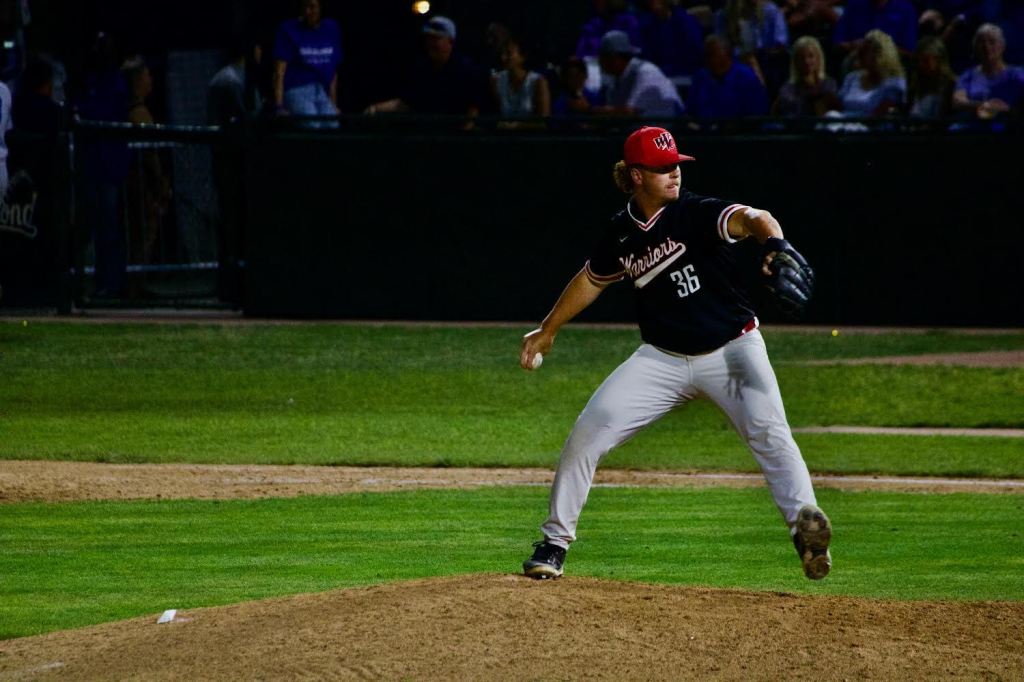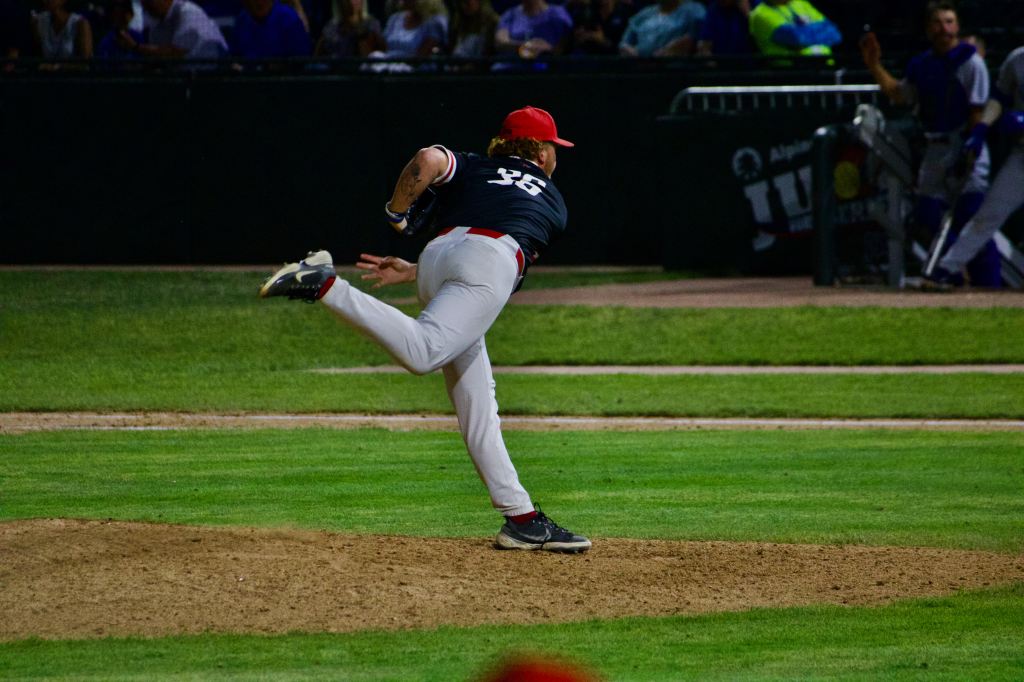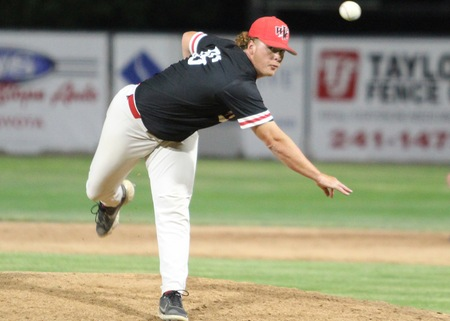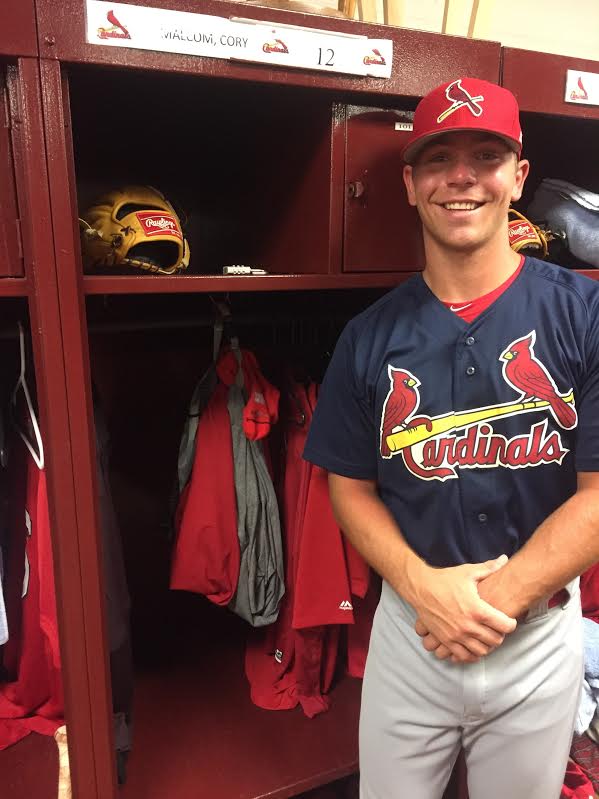
BY STEVE KRAH
Christian Williams was in the mix Friday, May 3 as Michigan State University edged visiting rival Michigan 3-2 in Big Ten Conference baseball.
The righty-swinging redshirt junior occupied the No. 6 slot in the Spartans lineup.
Another Williams — Nick — lofted a 10th-inning sacrifice fly that won the game and was mobbed by his teammates.
Heading into Game 2 of the three-game Saturday, May 4 at McLane Stadium at Kobs Field in East Lansing, Mich., Christian Williams has played in 39 contests (37 starts) and is hitting .280 (37-of-132) with three home runs, no triples, eight doubles, 24 runs batted in, 28 runs scored and an .831 OPS (.422 on-base percentage plus .409 slugging average). The designated hitter has eight multi-hit games with four safeties Feb. 24 against Marshall and three Feb. 28 at Georgia.
“I just like to see the ball in the heart of the plate,” says Williams of his offensive approach. “I look for something middle-middle with the fastball and use my athleticism to adjust from there.”
Williams was red-shirted for the 2021 season. In 2022, he played in 24 games (18 starts) and hit .258 (17-of-66) with two homers, two triples, four doubles, 16 RBIs, 14 runs and a .816 OPS (.346/.470). As a catcher, he made 84 putouts with six assists and posted a .978 fielding percentage.
A broken hamate bone in his hand suffered while swinging the bat limited Williams to just two games for the 2023 Spartans.
He was with the Midwest Collegiate League’s Northwest Indiana Oilmen (the MCL is now the Northern League) in the summer of 2021, the champion Bag Bandits in the College Summer League at Grand Park in Westfield, Ind., in 2022, missed 2023 while rehabbing from his hamate surgery and plans to go this summer with the Coastal Plain League’s Lexington County (S.C.) Blowfish. He is to be be joined by MSU teammate Sam Busch.
Williams, 22, has at least one year of remaining eligibility and could have two if he seeks and is granted a medical redshirt for ’23. He graduated April 29 with a Kinesiology degree. He plans to pursue a certificate in Coaching, Leadership and Administration while playing in 2024-25.
What about his defensive keys while behind the plate?
“Catching’s a tough position. You’re seeing the whole field. You’re kind of the unsung hero at times. Good catchers go unnoticed.
“When I’m back there I try to help my pitchers as best as I can and be a leader on the field — stay calm, cool, collected and athletic and try to help the team win.”
It was at about age 12 that Williams became a catcher.
“When I was younger I liked the gear,” says Williams of why he decided to be a backstop. “I just stuck with it.”
Born in Tampa, Fla., Williams moved to Indiana at about 3 months. I’ve been in Indiana for most of my life. He played rec ball in Pike Township in Indianapolis until 12.
There was followed by a four-year stint in Michigan where he earned two baseball letters at Northville High School playing for head coach John Kostrzewa and played travel ball for the Michigan Bulls.
When he returned to the Hoosier State, Williams went with the Indiana Bulls for his 17U summer and earned two baseball letters at Carmel (Ind.) High School with his 2020 senior season taken away by the COVID-19 pandemic. The Greyhounds head coach was Matt Buczkowski.
“He was a great coach,” says Williams of Buczkowski. “He’s a great leader and a great guy. He led us in the right direction. He let us have fun — but at the same time — kept us on the straight and narrow.
“He kept us serious when we needed to be. We won a lot of games.”
Christian is the son of Alan and Lisa Williams. Dad played football at Williams & Mary University and mom soccer at Slippery Rock University.
Among his football-coaching father’s teams have been the Indianapolis Colts and Chicago Bears. He is taking the year off.
Two brothers — Solomon Williams (Carmel Class of 2022 now a safety at Princeton University) and Nathan Williams (Carmel Class of 2025 and exploring college options) — are football players.
At Carmel (Ind.) High School, Christian was a quarterback, receiver and kick returner and considered football as his collegiate route.
“I had a strong thought,” says Williams, who won four football letters as a high schooler and helped Carmel to a 2019 Class 6A state runner-up finish with 118 all-purpose yards in the title game. “I was being recruited in both (baseball and football) until just before my senior year. Ultimately, I decided on baseball. I couldn’t forgive myself if I wasn’t able to swing a bat again.
“I hit the recruiting process hard and ended up here at Michigan State.”
MSU counts Jake Boss Jr., as head coach.
“He’s a great leader and a strong Christian guy,” says Williams of Boss. “He’s an awesome guy to play for. He lets us do our thing and have fun.”
Spartans hitting coach duties fall to former Western Michigan University shortstop Andrew Stone.
“He’s taught me how to be a good, mature hitter, stay inside the baseball, take good swings and work on my mechanics,” says Williams of Stone. “I work on my approach at the plate and the mental side and being confident and collected.”
Adam Eaton, who logged 10 Major League Baseball seasons, is Michigan State’s director of player development.
“Just learning from a big leaguer has been amazing,” says Williams of Eaton. “He just has a different mentality and approach to the game. To pick up on little things that he teaches us has been huge for me.
“It’s really the mental side and how to be a good baseball player as much as the X’s and O’s and swing techniques. How do I approach baseball on a day-to-day basis? How do I show up and play hard? What do coaches look for?”
The rest of the MSU coaching staff includes Graham Sikes and Mark Van Ameyde plus director of baseball operations Tommy Merlo.
Williams’ favorite MLB team is the Boston Red Sox. He picked that up from his mother who grew up in New England and her side of the family.
Former Red Sox second baseman Dustin Pedroia was a special player to Williams.
“He was a smaller player and I’ve always a shorter guy,” says Williams, who is 5-foot-9 and 200 pounds. “I liked how he played the game hard and well at his size.”






